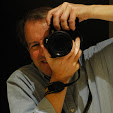"In the pages that follow, I'll be giving you a bird’s eye view of a few independent technologies, each aspiring to get useful metadata back into the Web. ..
We'll start with an explanation of that metadata word (so we can finally quit italicizing it).
Next comes a tour of the platitudes and latitudes of GeoURL, a fun, on-your-site-in-just-ten-minutes META tag that pinpoints your webpage’s real-world location with GPS-style accuracy.
Then we'll check out SMBmeta, a newly launched metadata framework designed to give small businesses their fair share of the Web limelight.
We'll finish up with a macro look at some of the 'Semantic Web' standards favored by the W3C: Dublin Core and RDF — and we’ll show them off a bit with FOAF (Friend of a Friend), an application which leverages both those high-minded efforts. "
22.7.03
17.7.03
Nikon Talk Forum: Digital Photography Review: Smooth Skin Technique
If you use Photoshop this is what you would do...
Open the image and after you've done what corrections you think necessary
1-duplicate the layer
2-apply guassian blur to that top layer, oh... around 4 should do.
3-click on the 'create a layer mask' icon (bottom of layers palette)
4- hit d on your keyboard to set colors on the toolbar to black and white.
5- choose the fill tool (bucket) and make sure black is your foreground color and click in the image. Note the layer mask changed to black.
6-make sure your foreground color is white, pick a soft paintbrush and set it's opacity low, maybe around 15 to 20.
7-paint over skin, staying away from the eyes and teeth , hair, eyebrows etc. With the brush set at a low opacity the effect builds up slowly just as it should, so enlarge the image and keep brushing.
8-if you go to far, simply make black your foreground color and go back over the area to correct
9-if when your done you think it's a little too much, reduce the opacity of the blurred layer on the layers palette to your liking."
Open the image and after you've done what corrections you think necessary
1-duplicate the layer
2-apply guassian blur to that top layer, oh... around 4 should do.
3-click on the 'create a layer mask' icon (bottom of layers palette)
4- hit d on your keyboard to set colors on the toolbar to black and white.
5- choose the fill tool (bucket) and make sure black is your foreground color and click in the image. Note the layer mask changed to black.
6-make sure your foreground color is white, pick a soft paintbrush and set it's opacity low, maybe around 15 to 20.
7-paint over skin, staying away from the eyes and teeth , hair, eyebrows etc. With the brush set at a low opacity the effect builds up slowly just as it should, so enlarge the image and keep brushing.
8-if you go to far, simply make black your foreground color and go back over the area to correct
9-if when your done you think it's a little too much, reduce the opacity of the blurred layer on the layers palette to your liking."
16.7.03
WINMAIL.DAT attachment to messages
I forwarded a message from outlook to a mac user; they got an error message.
winmail.dat attachment to messages: "Issue: Messages come in with an attached file 'WINMAIL.DAT' or 'AT00001.DAT' and neither Eudora nor any other program can open it."
This leads to (from Microsoft's Knowledge Base) ... Outlook and the Microsoft Exchange Client sometimes use a special method to package information for sending messages across the Internet. This method is technically referred to as Transport Neutral Encapsulation Format (TNEF).
Net net? Use plain text formating!
winmail.dat attachment to messages: "Issue: Messages come in with an attached file 'WINMAIL.DAT' or 'AT00001.DAT' and neither Eudora nor any other program can open it."
This leads to (from Microsoft's Knowledge Base) ... Outlook and the Microsoft Exchange Client sometimes use a special method to package information for sending messages across the Internet. This method is technically referred to as Transport Neutral Encapsulation Format (TNEF).
Net net? Use plain text formating!
Subscribe to:
Comments (Atom)
